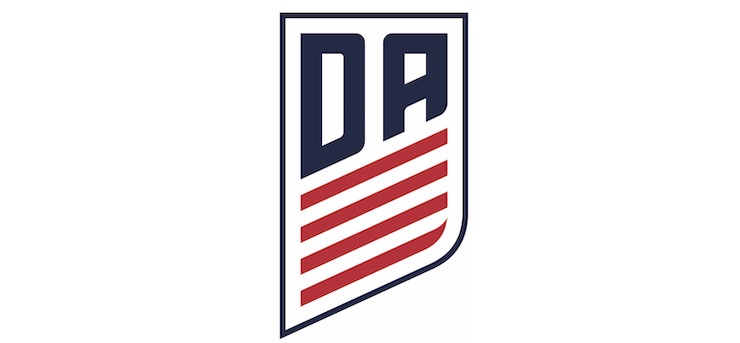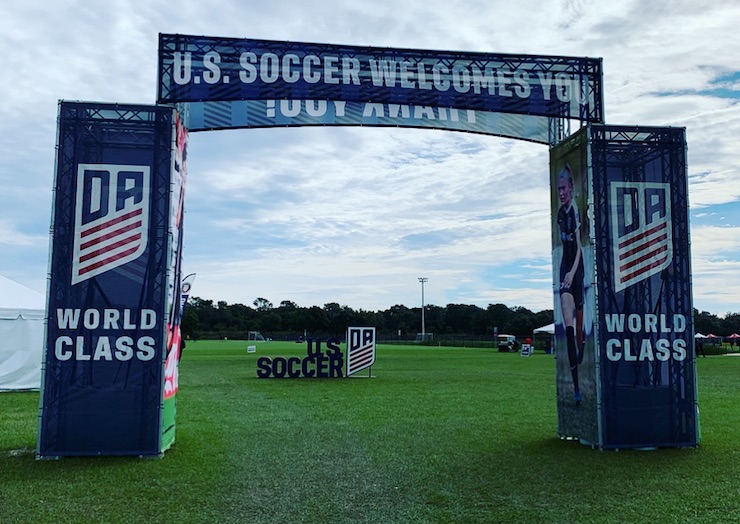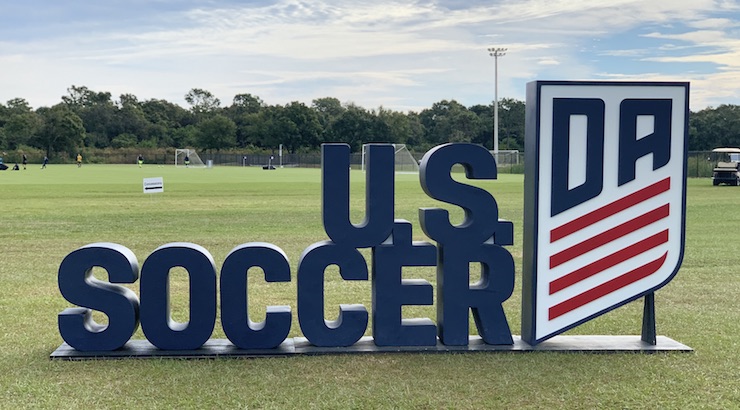Update on the DA for 2019/20 Season
The idea is to empower the youth soccer clubs and leagues to continue the pathway set forth by the Development Academy — The DA turns back the U-12 age group to the clubs for the next season.
The U.S. Soccer Development Academy is always evolving, embracing the ever-changing landscape of youth soccer and the best solution for developing world-class players for the Men’s and Women’s National Teams.
DA Goal: Move the focus from team to individual player
The DA Winter Showcase has just kicked off in Lakewood Ranch, Florida and with the 2018 Showcase came the update on the Academy for the upcoming season.
A little background on the Development Academy
Reaching Across Our Vast Country
U.S. Soccer created the Development Academy in 2007 following a comprehensive review of elite player development in the United States and around the world. At that time, the Academy Program was launched for male players in the U-15 to U-18 age groups.
 In 2013, the Academy expanded direct influence to include the U-13/14 age group, improving the everyday learning environments for younger players by bringing them in line with the Development Academy philosophy, based on international standards.
In 2013, the Academy expanded direct influence to include the U-13/14 age group, improving the everyday learning environments for younger players by bringing them in line with the Development Academy philosophy, based on international standards.
In 2016, the Academy expanded to include Zone 1 and introduced the Player Development Initiatives (PDI) simultaneous with the U-12 Academy launch. This goal was to help spread uniform, age-appropriate standards to impact player development nation-wide.
This set the benchmark for all youth soccer clubs and leagues countrywide to achieve U.S. Soccer uniform standards.
The Academy U-12 Program
The goal has always been to increase the enjoyment of the game and to shift the focus away from a results-driven philosophy. We want a soccer culture that thrives and creates joy and longterm engagement – not a revolving door of kids who leave before they discover a lifelong passion for the game, or bloom and realize their potential.
The idea has always been to provide a safe and enjoyable soccer environment built on respect and positive encouragement from players, coaches, parents, and fans.
The concept of the U-12 program was simple and direct: expand the Academy influence to players and the youth soccer cubs at younger ages.
According to the Development Academy, since the introduction of the Academy U-12 tier, the program has:
- Created age-appropriate programming, training, and game environments
- Streamlined individual players’ learning pathways
- Improved the quality of coaching for younger players by extending minimum coaching license requirements—B licenses for coaches and A licenses for Directors
- Shifted focus away from a results-driven philosophy
- Increased training frequency (3x/week minimum) and promoted fewer, more meaningful games
- Applied age-appropriate standards and philosophy to training and games
- Focused on local environments, reducing and limiting travel
- Unified player development initiatives and standards across the country
The Development Academy now believes the clubs and leagues around the country can carry on this program and therefore, in the fall of 2019 will no longer operate U-12 programming.
The DA will begin the transition to a decentralized U-12 initiative led by Clubs and Members.
“This will allow for more direct management of Zone 1 player needs while continuing to meet Academy philosophy and standards,” according to the brief provided to the clubs at the DA Winter Showcase.
Currently, 3,870 players participate in Academy standards-based environments
“We want this number to continue to grow through Member influence on the landscape and to positively impact hundreds of thousands of players. Additionally, we hope that organizing Zone 1 programming in your local communities will limit travel and costs for players and parents, so the players can spend more time on the field.”
The goal behind this decision is to empower and support clubs to operate standards-based programming.
According to the information released by the DA, “The Academy Clubs have shown a commitment to this collective effort to improve environments, and in many cases have already expanded the philosophy to additional non-Academy teams and ages within their clubs. In addition, Members have also taken steps to adopt PDI’s. We are confident that the initiative can continue to grow as needed without direct programming hosted or organized by U.S. Soccer or the Development Academy.”
The Big Impact?
Beginning in 2019-20, since there will no longer be a U-12 DA Academy level, there will not be an option for U-12-only clubs to participate in DA programming.
While the DA hopes that those youth soccer clubs no longer participating will seek affiliations or partnerships with full Academy Clubs or Professional Clubs, only time will tell the final shift in the landscape.
“The goal, as always, is to achieve the best possible environments for the development of world-class players,” said U.S. Soccer Development Academy Director, Jared Micklos.
“As part of our Mission to improve everyday environments for all athletes, we will continue to support Clubs and Members through our newly created Club Development department,” said Micklos. “We believe the time is right for Clubs and Members to take control of their environments and take ownership of the U-12 age group as part of Zone 1 programming. Together, we will continue to create the best environments for player development now and in the future.”
Micklos has been the Director of the Development Academy since 2014.
What should the U-12 Game Look Like?
Following Zone 1 programming principles and initiatives, the U-12 game should always emphasize training in a positive learning environment and provide all players with meaningful minutes, focusing on development, not results.
What does this mean specifically?
At the U-12 age level, the idea is to ensure every player plays in at least 50% of game minutes each game.
To provide a quality playing experience, longer periods of playing time and less frequent interruptions have been shown to benefit player development and accelerating learning by allowing teams to move players up or down based on physical needs and/or relative age to appropriately challenge a player is important.
Creating a successful U-12 youth soccer environment takes everyone working together. And this includes all club constituents: parents, coaches, support staff, etc need to play a role in creating a supportive and positive environment for training and games.







